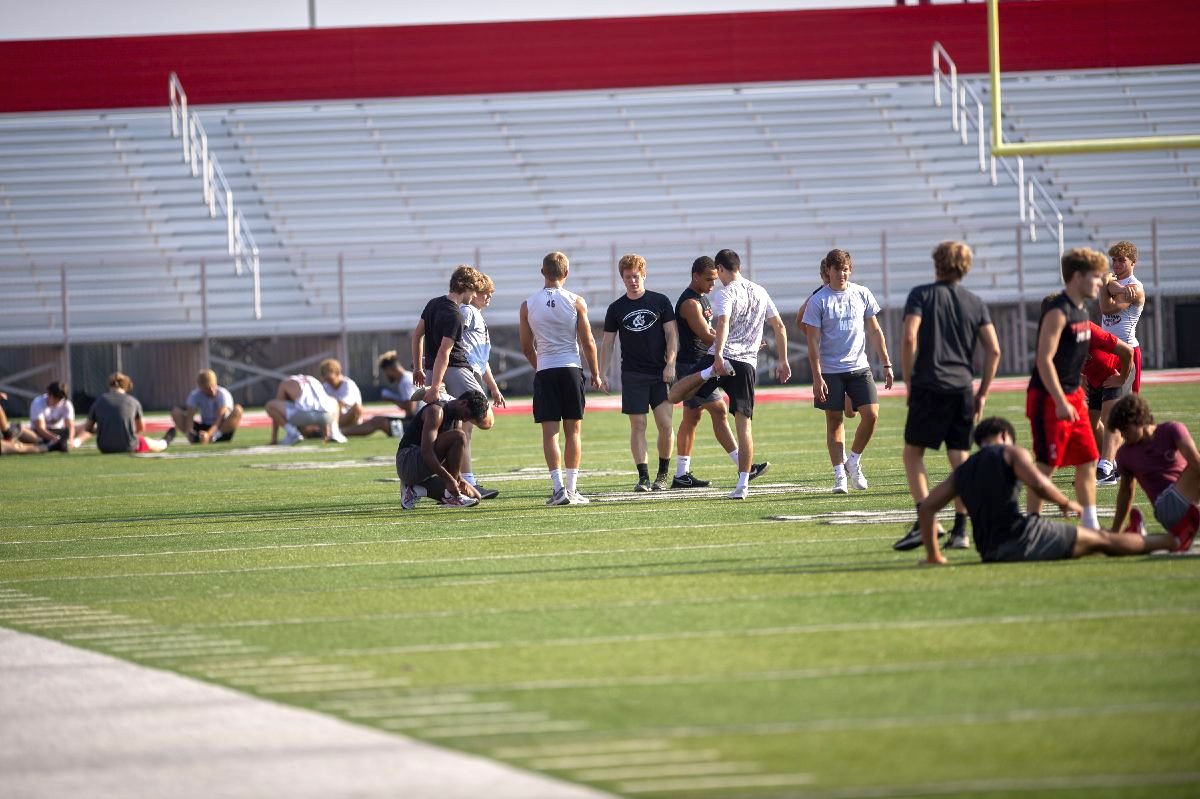<p>During an ordinary football offseason, Whiteland coach Darrin Fisher would have time to fully prepare his team in three key areas — strength training, speed training and football skill work.</p><p>But between all of the time that teams normally have in the spring being eaten up, and all of the constraints that have been placed on summer conditioning and practices, there simply isn’t enough time to be thorough in all three.</p><p>Fisher, like every other high school coach in Indiana, has to figure out the best way to use the limited preseason time he has this year.</p><p>"I think you have to prioritize what’s more important right now," Fisher said. "Is it the speed development part? Is it the strength part? Is it the football position fundamentals? They all have a part, and there’s only so much work capacity to go around. You have to prioritize. That’s what I find the challenge is."</p>[sc:text-divider text-divider-title="Story continues below gallery" ]<p>"Challenge" has become an extremely common word in 2020.</p><p>Nothing has been normal about this year in any aspect of American life, and the sports landscape is no different. The many hurdles that the pandemic has put up have made this, in the minds of some coaches, the most challenging preseason they’ve ever faced.</p><p>"In some ways, yeah. It’s been challenging in large part because there were so many unknowns up until just a couple of weeks ago," Franklin coach Chris Coll said. "As coaches, we’re just trying to navigate what’s in front of us."</p><p>Part of that includes trying to play catch-up. Center Grove coach Eric Moore noted that the loss of the spring track season actually put his skill-position players behind schedule more than anything else.</p><p>The only thing coaches can do, though, is play the hand they’re dealt.</p><p>"It’s been a different beginning," he said. "For me, I’m looking at kids that I didn’t get the chance to train for the last three months, and probably like everybody in the country, you’re a little bit behind where you want to be in the middle of July. But it is what it is, and our kids are doing a great job."</p><p>In addition to the challenges that come with a truncated schedule, coaches are also faced with navigating the safety guidelines that have been put forth by the state. And while last week’s announcement from governor Eric Holcomb that Indiana was remaining at "Stage 4.5" of its re-opening plan for two more weeks apparently wasn’t intended to prevent sports teams from moving to Phase 2 of their restart plan on Monday, the Indiana Football Coaches Association is being more cautious.</p><p>Columbus East coach Bob Gaddis, the IFCA executive director, said last week that the organization recommends "moving very carefully into Phase 2, with a Phase 1 mentality."</p><p>Some teams, naturally, are taking the COVID-19 threat more seriously than others; the guidelines are, after all, guidelines and not hard regulations. But for the most part, county players have been on board, according to their coaches.</p><p>Indian Creek coach Steve Spinks laid the situation out in simple terms for his team — if Indiana was willing to pull the plug on the state tournament in boys basketball, then they’ll be willing to pull it on football too.</p><p>"I think the overwhelming majority of people, they don’t take it that seriously," Spinks said. "(But) when you put it in the terms of, ‘Guys, you love football, right?'</p><p>"They shut down basketball. You bet your butt they will shut down football if they had to."</p><p>From a preparation standpoint, though, the biggest challenge that teams face is ramping up to full speed without the benefit of the normal ramp. Greenwood coach Mike Campbell likens the situation to many years ago, when the IHSAA was placing greater restrictions on the number of hours teams were allowed during the offseason.</p><p>Fisher, for one, has opted to take the process step by step, building his players back up slowly instead of trying to shoehorn everything into the shorter time period.</p><p>"I don’t want to give away the secret sauce," he said shortly after workouts began, "but what we are doing is, we are sort of basing everything on what a football drive would look like. For example, the shortest drive you’ll ever play is four plays, so we’re starting our conditioning based on how long a football drive is, and the drives will get longer as these next six weeks go by."</p><p>The process won’t be as cut and dried as it has been in previous years, and every team will face obstacles between now and those scheduled opening nights a month from today.</p><p>But there is football — for now, at least — and after a few months of nothing, that’s enough for most coaches.</p><p>"I don’t want to say it’s as happy as I’ve been in three or four months," Campbell said after workouts resumed, "but it’s about as excited as I’ve been, just to get to walk out on the field and have the kids out there running around. And even though we were all spaced out, spread out, it felt like we were doing work."</p>
Nobody covers Johnson County and the surrounding areas like the Daily Journal.
30 S. Water St., Second floor, Suite A, Franklin, IN 46131
Phone: (317) 736-7101
Toll free: (888) 736-7101
All text, photos, graphics, artwork and other material on this site are copyrighted and may not be published, broadcast, rewritten or redistributed without permission.
Contact us: [email protected]
© Copyright AIM Media Indiana, LLC





